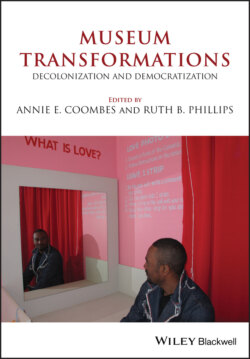Читать книгу Museum Transformations - Группа авторов - Страница 68
History wars
ОглавлениеIn the final decade of the twentieth century, the past came to have an even more significant place in Australian political and cultural life as historical narratives about the nation were exploited in an unprecedented manner. Australia was not alone in this regard. As a result of the decline of the left, major political parties in many liberal democracies increasingly espoused similar economic and social policies, and in order to distinguish themselves from each other they turned to the realm of culture and more especially that of history. Arguably, the deepening impact of globalization played a role in this trend. As their power in determining economic matters has dwindled in the face of the growing influence of corporate bodies which have no local allegiances, nation-states have had to find other means of projecting their sovereignty.
In the Australian case, Paul Keating, who had become prime minister in 1991, sought to position the Australian Labor Party as the standard bearer of Australian nationalism. He advocated a deeper embrace of Australia’s place in the Asia–Pacific region, called for an Australian republic to replace Australia’s constitutional ties with the British monarchy, and embraced the cause of reconciliation between Aboriginal and settler Australians. He connected these goals to critical events in the nation’s past, interpreting them in the light of the currents that had come to dominate scholarly work in the field of Australian history since the mid- to late 1960s, a corpus which has been called the “new Australian history.” In giving voice to an aggressive Australian nationalism, he attacked earlier conservative leaders, deriding their slavish devotion to Britain and blaming them for suffocating the growth of a distinctive Australian identity (Attwood 2005). At the same time, Keating, more than any Australian prime minister since Whitlam, connected the plight of Aboriginal people to the future of the nation. Deploying the language of shame, he called on settler Australians to tackle the burden of the nation’s colonial past. He argued that acknowledging this legacy was a matter of historical truth, and addressing it a test of whether Australia was truly a democracy. Combining a call for Australia to become a republic with a demand to uphold Aboriginal people’s native title, he suggested that these would provide the basis for a new foundational history since they could help resolve the very historical problems that undermined Australia’s legitimacy as a nation, namely its Britishness and its treatment of Aboriginal people. In 1993 Keating’s government was unexpectedly returned to office. History seemed to represent political capital. In opposition, the conservatives under John Howard’s leadership were prompted to take up the nation’s history as a political weapon. Australia’s history wars had begun. They would be fought largely over the nation’s Aboriginal past as Howard launched an attack on the new Australian history, damning it as an account that suggested the nation’s past was little more than a shameful history of imperialism, racism, and the like, and held that the appropriate stance settler Australians should adopt toward it was one of regret rather than one of apology (Attwood 2005).
This was the context in which the creation of a national museum in the nation’s capital returned to the political agenda. In the election campaign of 1996, the Australian Labor Party merely proposed the building of the Gallery of Aboriginal Australia and, in response, the Liberal Party claimed that the government was favoring the special interests of minority groups, such as Aboriginal people, and made its own commitment to provide funding for what it called a fully fledged national museum (Gardiner-Garden 1997). After winning office, the Howard Liberal/National Party government announced that it would proceed with the construction of a museum where “all the stories of the nation [were] told” (Alston 1996). Yet, at the same time as it pursued this racially inflected program, the government agreed to construct a new building for the Australian Institute of Aboriginal and Torres Strait Islander Studies on the same site as the museum, a plan that revealed the degree to which Aboriginal matters and national matters had come to be joined to one another.
As the National Museum of Australia moved toward completion in 2000, the government’s appointees to the museum’s governing council made it known that they had no truck with the Pigott Report’s pluralistic vision of the museum as an institution that should stimulate dialogue, doubt, and debate, even though or perhaps because the museum’s director, Dawn Casey, an Aboriginal woman, had recently affirmed its commitment to this ideal (Casey 2001, 3, 6). Instead, these critics demanded that the museum stage exhibitions that celebrated the nation, bolstered national pride, reinforced national identity, and strengthened national unity. Upon its opening in March 2001, the museum came under further attack, and former journalist and academic Keith Windschuttle soon took up the cudgels. Most dramatically, he repeated claims that the museum had borrowed the design of Daniel Libeskind’s Jewish Museum in Berlin in order to signify that Aboriginal people had suffered the equivalent of the Nazi genocide. More substantively, he alleged that the museum’s treatment of Aboriginal–settler relations was badly flawed, and devoted considerable attention to a display that sought to tell the story of a massacre that had allegedly taken place in the 1820s at Bells Falls Gorge (Windschuttle 2001, 11, 18–19).
